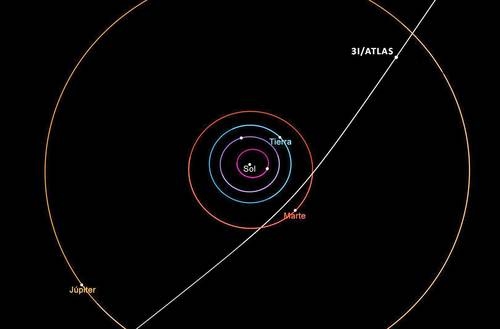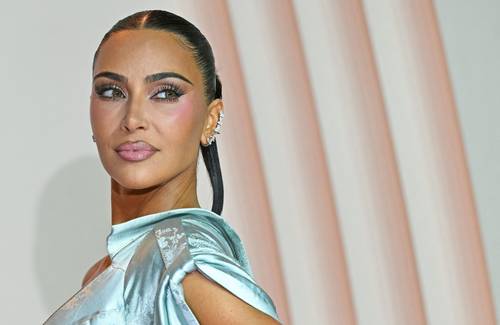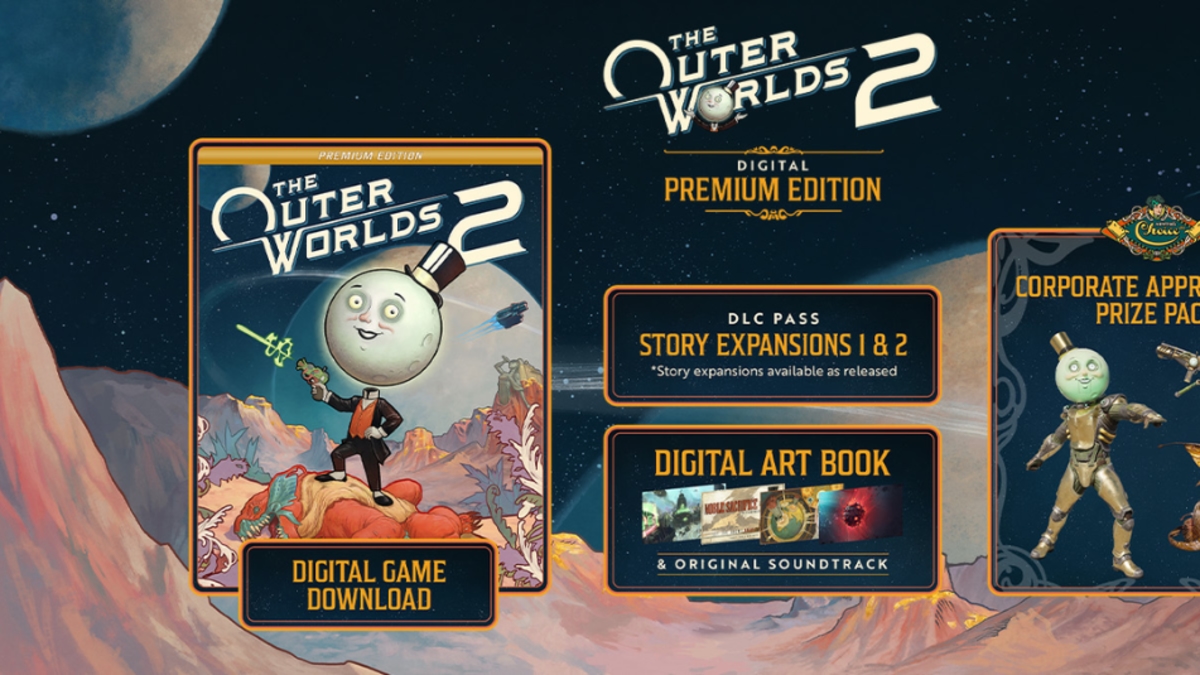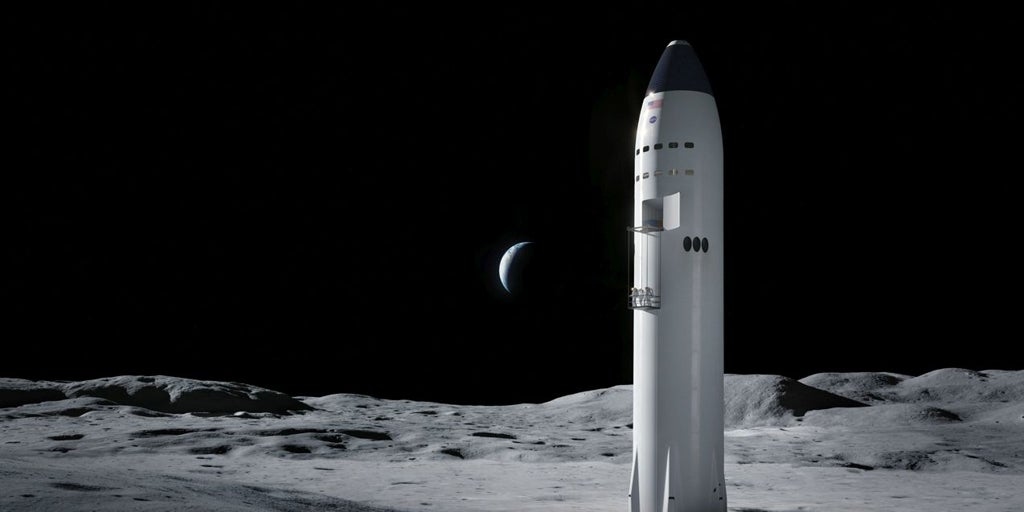Comet 3I/Atlas expands our understanding of the origin, evolution, and diversity of the universe

Comet 3I/Atlas expands our understanding of the origin, evolution, and diversity of the universe
In its fleeting passage through our planetary system, this interstellar visitor approaches the Sun, and its orbit is hyperbolic.
▲ 3I/Atlas is the third confirmed object from outside the solar system. It was discovered on July 1st. Photo: Europa Press
Europa Press
La Jornada Newspaper, Friday, October 31, 2025, p. 6
Madrid. The interstellar comet 3I/Atlas has an estimated nucleus of between 10 and 30 kilometers in diameter, travels at a speed greater than 68 kilometers per second, about 245 thousand kilometers per hour, during its passage through the inner solar system and its orbit is hyperbolic (it does not belong to the solar system).
This is an exceptional scientific event that offers a unique opportunity to understand the origins of the universe and reinforces Spain's role in international astronomical research.
3I/Atlas (C/2025 N1) is the third confirmed object from outside the solar system. It was discovered on July 1st by the Atlas (Asteroid Terrestrial-impact Last Alert System) network in Chile.
Studying them allows us to observe material that was formed in another star system.
It is considered an interstellar comet because its hyperbolic orbit demonstrates that the asteroid is not part of the solar system, but rather comes from space, to which it will return after a rapid passage through our system. Before 3I/Atlas, only two visitors of this type had been detected: Oumuamua (2017) and 2I/Borisov (2019).
Comet 3I/Atlas poses no risk to Earth, as its closest approach will be 270 million kilometers, a safe distance.
It will reach its perihelion (the point closest to the Sun) when it passes within 210 million kilometers, near the orbit of Mars. At that time, it will exhibit its greatest activity and brightness, becoming visible with professional telescopes.
The monitoring of comet 3I/Atlas is the result of a broad international collaboration involving the European Space Agency (ESA), NASA, the International Asteroid Warning Network (IAWN), which includes several Spanish observatories: Instituto de Astrofísica de Canarias (IAC), Parque Astronómico del Montsec; Observatorio La Cañada; Observatorio Paus and Light Bridges SL.
The IAWN network, coordinated by the United Nations, has organized a global observation campaign between November 25, 2025 and January 27, 2026, in which Spain actively participates through the Spanish Space Agency and various national centers.
The IAC plays a leading role in the 3I/Atlas research.
From the Teide and Roque de los Muchachos observatories, telescopes such as Atlas-Teide, TST, TTT, and the Gran Telescopio Canarias (GTC) are being used to confirm the asteroid's orbit and characterize it, analyzing its composition and measuring its activity. Additionally, the team is collaborating with the Complutense University of Madrid on the interpretation of spectral data.
Studying its spectrum and dynamics will reveal its age, chemical composition, and possible galactic origin. Preliminary estimates suggest it may have originated from a star system formed several billion years before our own.
Studying these types of comets is important because they contain primordial material from other star systems, formed even before the Sun. Analyzing them offers clues about how planets and stars are born in different regions of the galaxy, and helps us understand the diversity of the cosmos.
The 3I/Atlas reinforces the capacity of the international scientific community to collaborate on unique phenomena and demonstrates how Spanish science contributes to the global understanding of the universe.
Each new interstellar visitor expands our understanding of the origin, evolution, and diversity of the universe.
NASA responds to outlandish conspiracy theory about the 1969 moon landing spread by Kim Kardashian

▲ The influencer during the premiere of the series All's Fair in Paris. Photo AFP
Brittany Miller
The Independent
La Jornada Newspaper, Friday, October 31, 2025, p. 6
NASA believes Kim Kardashian is barking at the moon.
After the 45-year-old Skims founder claimed on yesterday's episode of The Kardashians that the 1969 moon landing did not happen, the federal agency gave her a strong response with a brief message on social media.
“Yes, (Kim), we’ve been to the Moon before… six times!” Transportation Secretary Sean Duffy wrote in X. He added that NASA’s Artemis mission plans to return to the Moon under Donald Trump’s leadership.
“We won the last space race and we will win this one too,” Duffy concluded.
Kardashian's theory—which has been repeatedly refuted—is that the Apollo 11 astronauts, including the late Neil Armstrong and 95-year-old Buzz Aldrin, never actually went to the moon: they launched into orbit and waited there while the world watched scenes that were actually filmed in a studio, before returning to be falsely hailed as heroes.
Kim Kardashian revealed her beliefs about the moon landing on The Kardashians (Disney).
The influencer 's opinion on the historical event came during a conversation with her co-star, Sarah Paulson, on the set of the legal drama All's Fair , which premieres on Hulu next week.
“So far I’ve sent you a million articles about both Buzz Aldrin and the other guy,” Kardashian said, apparently referring to Armstrong as she tried to convince Paulson of the theory.
"Yes, do it," Paulson replied as his co-star began reading articles with quotes from the two astronauts.
“This girl asks, ‘What was the scariest moment?’ And (Aldrin) replies, ‘There was no scary moment because it didn’t happen. It could have been scary, but it wasn’t because it didn’t happen.’”
Kardashian claimed that, due to Aldrin's age, his facade has cracked, leading him to inadvertently reveal the truth. "So I don't think it happened," she added.
Although Paulson was skeptical, she assured Kardashian that she would conduct a thorough analysis of the theory.
Buzz Aldrin landed on the Moon in the first moon landing in history in 1969.
A producer of the reality show later urged the celebrity to confirm her belief in the conspiracy theory.
“I don’t think we did it. I think it was fake,” he said, referring to the moon landing.
I've seen some videos of Buzz Aldrin saying it didn't happen. He repeats it constantly in interviews. Why does Buzz Aldrin say it didn't happen? There's no gravity on the Moon, so why is the flag waving? The boots they have in the museum, the ones they supposedly wore on the Moon, have a different footprint than the ones in the photos. Why aren't there any stars?
jornada





